google-site-verification: google0228a1feb97d321e.html
google-site-verification: google0228a1feb97d321e.html
google-site-verification: google0228a1feb97d321e.html
google-site-verification: google0228a1feb97d321e.html
google-site-verification: google0228a1feb97d321e.html
google-site-verification: google0228a1feb97d321e.html
Mechanism of ultrasonic spraying -- Ultrasonic atomization -- YMUS ultrasonic spraying system
▌Ultrasonic precision spraying machine
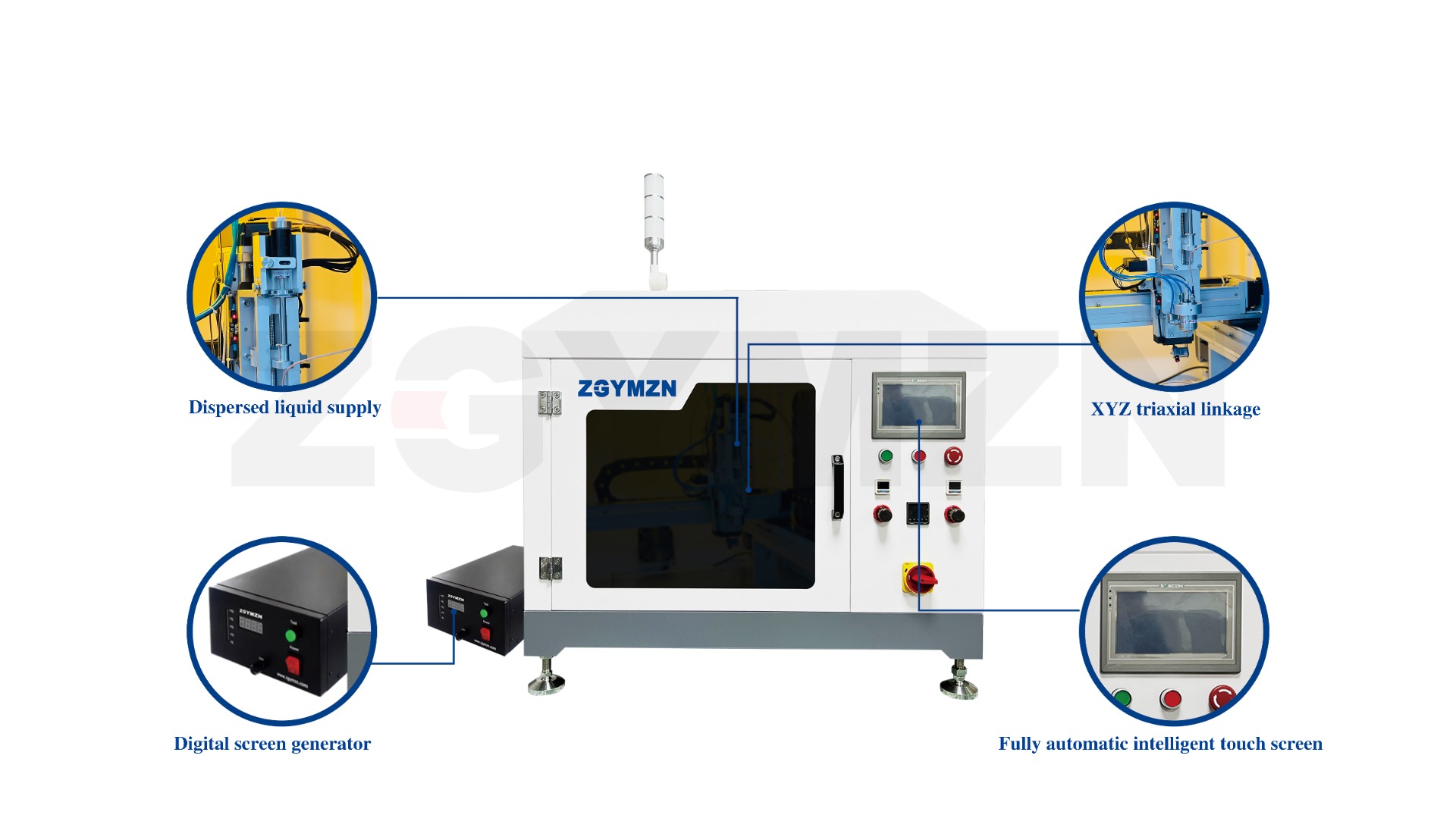
▌Mechanism of ultrasonic atomization spraying
The ultrasonic nozzle uses the piezoelectric effect to convert electrical energy into high-frequency mechanical energy, which is transferred to the liquid to generate standing waves. The liquid is introduced into the atomizing surface through the nozzle, and when the liquid leaves the atomizing surface of the nozzle, it is broken into uniform micron level fine mist droplets, so as to achieve atomization. In the process of ultrasonic spraying, the size and distribution of droplets can be accurately controlled, so that very small droplets and particles can be quickly evaporated, thus producing particles with high specific surface area and forming thin film coating.
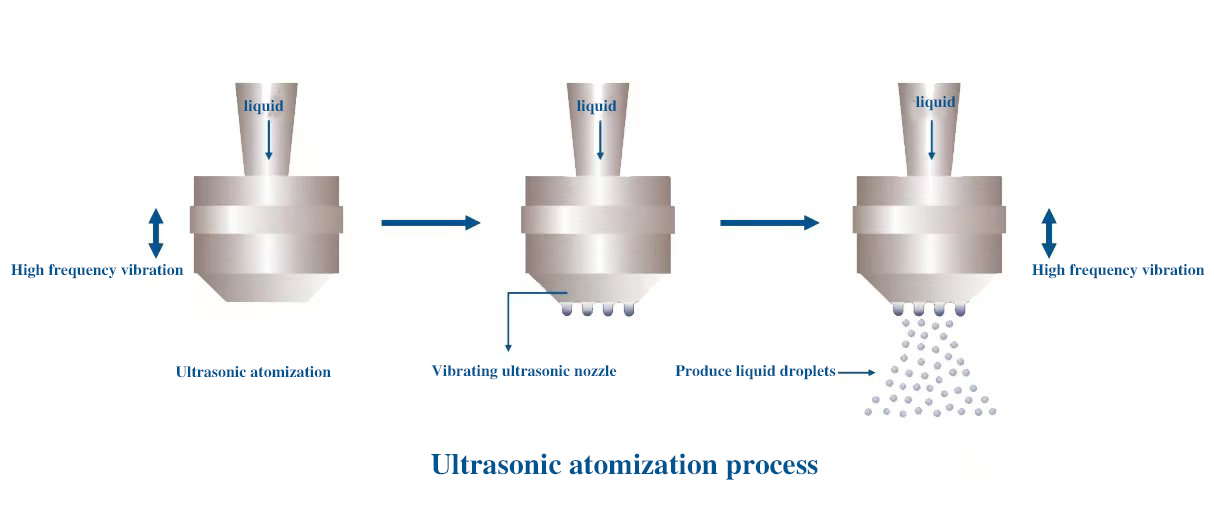
Ultrasonic nozzle technology
The ultrasonic nozzle is composed of a liquid inlet part, a connecting controller part, a transducer and a nozzle. The ultrasonic nozzle partially converts high-frequency electrical energy into mechanical energy through the transducer, which is transferred to the liquid to generate standing waves. As the liquid leaves the atomized surface of the nozzle, it is broken into a fine mist of uniform micron-scale droplets.
Spray suspension
The high frequency ultrasonic vibration makes the particles uniformly suspended for a long time, providing consistent particle suspension characteristics throughout the coating process to improve the process quality.
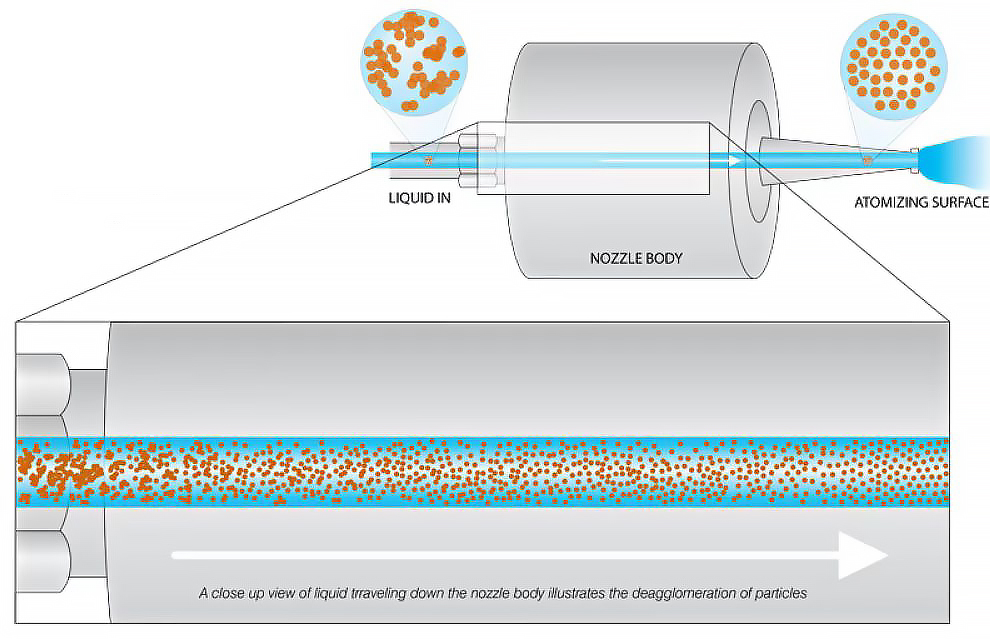
▌Structure power of ultrasonic atomizing nozzle
Structure
The nozzle body is made of titanium, which has outstanding acoustic properties, high tensile strength and excellent corrosion resistance. The protective case is made of 304 stainless steel (titanium is optional).
Power control
The vibration amplitude must be carefully controlled, and below the critical amplitude there is insufficient energy to generate atomization. But if the vibration is too high, the liquid will be torn and ejected in clumps. Only in a very narrow input power range of the ideal amplitude, can produce the nozzle unique and subtle low speed spraying effect. The size of the input power is completely different from that of other ultrasonic equipment, such as ultrasonic welding machine, ultrasonic cleaning machine, etc. The working power of those ultrasonic equipment is usually several hundred or several kilowatts, but for ultrasonic atomization, the input power is generally enough from 1 to 15 watts.
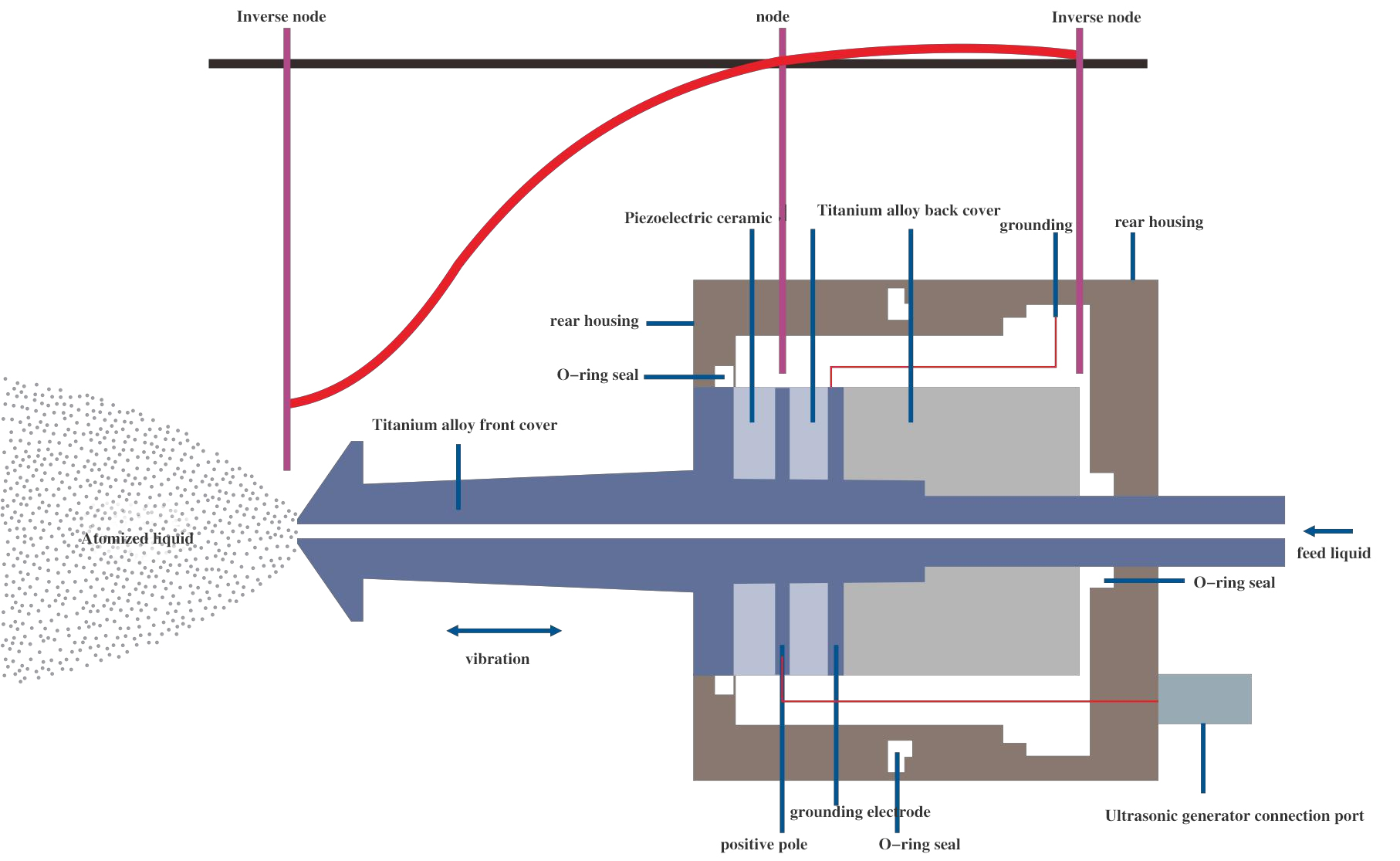
▌Droplet size distribution and flow rate
Droplet size distribution
In ultrasonic atomization, the size of the droplet is determined by the vibration frequency of the nozzle, the surface tension and density of the liquid, among which the frequency is the determining factor. The higher the frequency, the smaller the median diameter of the droplet size.
Generally speaking, the size distribution of fog droplets generated by ultrasonic nozzle follows a normal distribution curve. The chart below shows the cumulative size distribution of fog droplets with water as the medium at different frequencies. There are several parameters that can describe the mean and median of a particular distribution of droplets. The median diameter of the number of droplets is the point at which 50% of the size of the droplets is measured, that is, half of the diameter of the number of droplets is greater than this value and the other half is less than this value.
The mean diameter of fog drops and the mean diameter of volume are both mean diameters. The mean diameter of number of fog drops refers to the sum of the diameters of all fog drops in a spray sample divided by the number of fog drops. The mean diameter of volume refers to the sum of the volumes of all fog particles in a spray sample (the volume is proportional to the cube of the diameter), take the cube root, and divide by the number of fog drops.
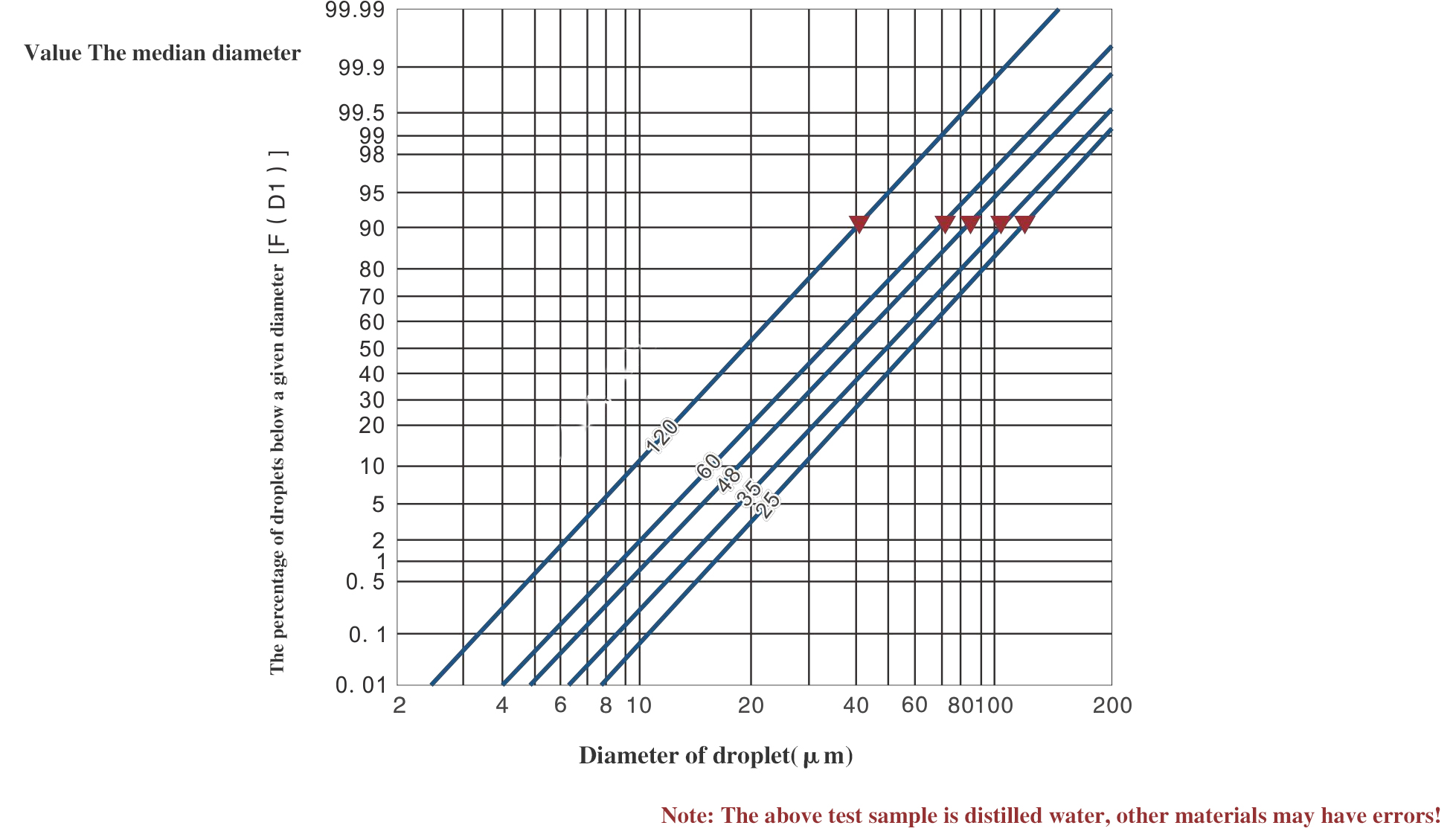
Flux
Because the atomization effect depends on the liquid reaching the atomization surface rather than the pressure, the liquid atomization speed only depends on the liquid reaching the atomization surface speed, so the flow range of each ultrasonic nozzle is generally larger. The flow regulation ratio (the ratio of maximum flow to minimum flow) is roughly limited to 5:1 for large holes and 10:1 for small holes.
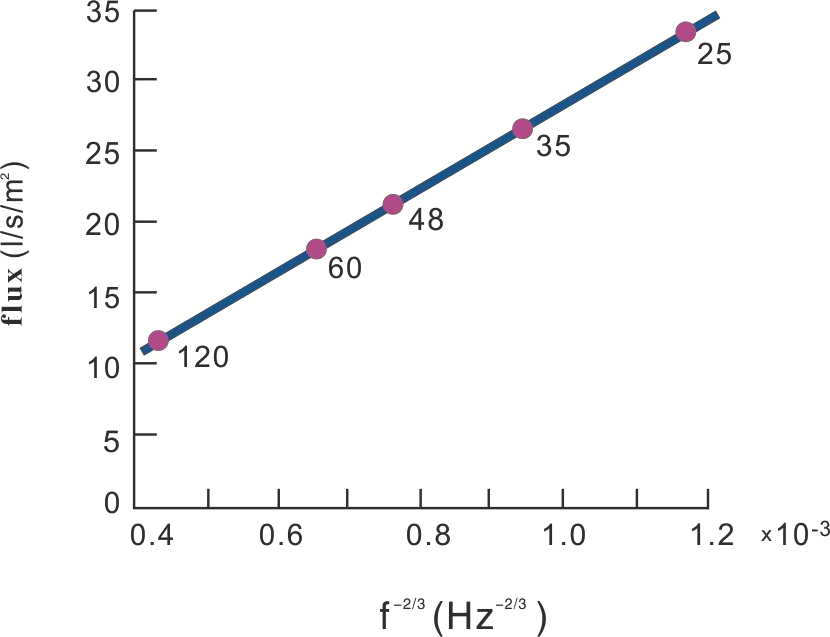
▌Comparison of spray techniques
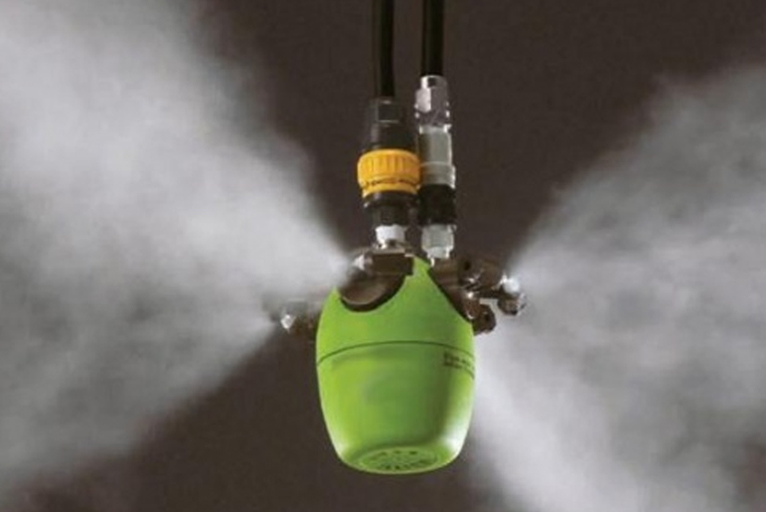
Traditional two fluid spraying
★ The kinetic energy of gas and liquid is used for atomization
★ Spray impact force is large, will cause spatter and waste of raw materials
★ The uniformity of atomized particles is poor
★ Easy to block the nozzle
★ Can not accurately control the spray flow, can not be low flow continuous spray
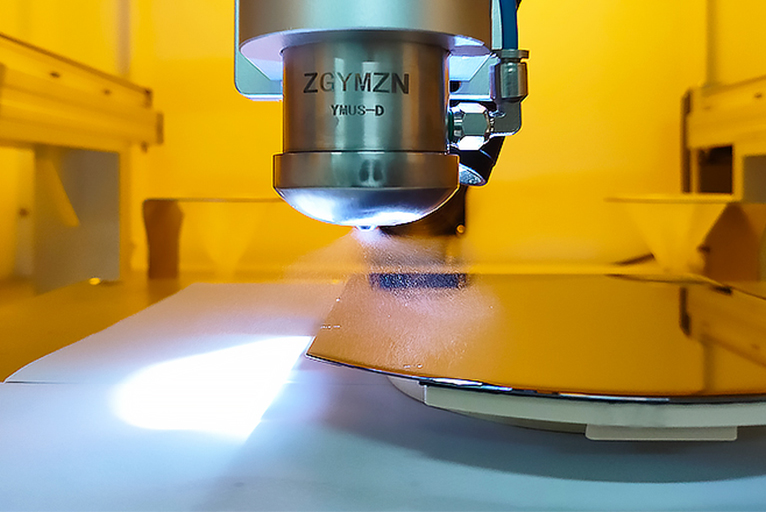
YMUS Ultrasonic spraying
★ Use high frequency ultrasonic vibration to atomize liquid
★ Spray impact is very small, will not cause splashing and waste of raw materials
★ Atomized particle uniformity > 95%
★ It is not easy to block the nozzle
High precision control coating thickness